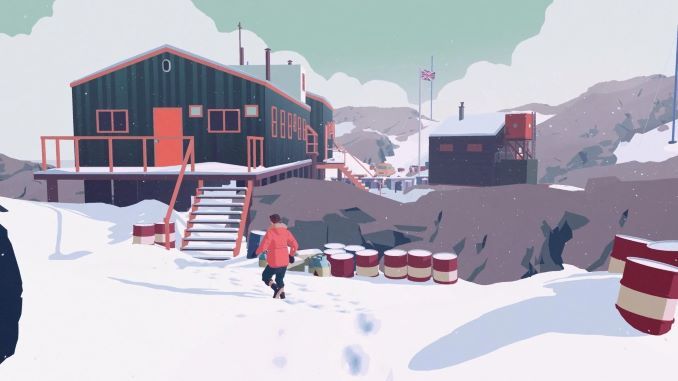South of the Circle Is a Smart Coming-of-Age Story about Masculinity and the Cold War

At first wind-chilled blush, South of the Circle doesn’t stand apart all that much from other narrative-driven games of its ilk. This Cold War-era tale owes its spareness of design and emphasis on emotional reactions to quiet yet powerful predecessors like Firewatch, Tacoma, Gone Home and What Remains of Edith Finch. But what London developer State of Play excels at is taking a well-known model of narrative games and, instead of reinventing the wheel, elaborates on what its predecessors accomplished so well. Namely, the way that narrative mechanics can underscore core themes (political or otherwise) in both expressive and literal ways.
It gets off to a rocky start. Pivoting between Antarctica and pre-Antarctic Treaty Cambridge University, its first scene takes place after Peter (our protagonist/POV character) and Floyd’s plane crash in the Antarctic circle. It tasks you with the kind of timed button presses found in quick-time events, and it’s difficult to distinguish if these are critical to the game’s themes or superfluous. Arguably this is the weakest part of the game, which doesn’t bode well for persuading players who are easily irritated by quick-time events. You can’t initially tell if the QTEs are only there to keep the game from being perceived as just one long cutscene (a la David Gage’s games), or if they actually contribute to what the game is trying to say. South of the Circle focuses on Peter’s psychological profile, and the quick-time events and their lack of direct action might be an extension of that.
This game (if we strip away its extra contextual trappings) is essentially a coming-of-age story about a man reckoning with his masculinity: how it’s defined by society at large and how it’s expected to be performed both publicly and privately. Peter is a gentle climatologist who has been bullied by his peers and brow-beaten by his father growing up in ‘60s Britain. He learns early that vulnerability and preferring a scholarly life over a life of action in the military is frowned upon. Yet he is encouraged by the women in his life, like his mother Irene and his fellow researcher and eventual love interest Clara, to lean into his more empathetic side in spite of the majority’s opinion.
At Cambridge, Peter continues to be haunted by figures who echo his father Reg’s toxic views of what being a man means as he pursues a paper about tracing weather patterns via clouds. (He is quite literally a cloud-chaser.) Peter’s supervisor Professor Hargreaves urges him to treat Clara like an expendable secretary while his “friends” Joseph and Sam encourage him to seduce undergraduates and reduce Clara to merely Peter’s exotic Scottish muse. Even the pilot Floyd parrots the same “stiff upper lip” language as Reg, pressing upon Peter in every moment of exhaustion that he has to man up or face the consequences.
This inner conflict is illustrated by the emotional reactions that color most of Peter’s interactions with key characters in the secondary plot of surviving a plane crash in Antarctica during the paranoid politicking and bomb-testing just a handful of years after the signing of The Antarctic Treaty. Peter isn’t a man of action and this is reflected in the way that his responses, even when choosing the most affirmative option, merely influence how he responds emotionally but does not necessarily change his mindset of preferring the path of least resistance.

-

-

-

-

-

-

-

-

-

-

-

-

-

-

-

-

-

-

-

-

-

-

-

-

-

-

-

-

-

-

-

-

-

-

-

-

-

-

-

-








































